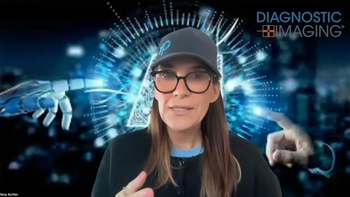
Radiology’s Role in Patient Care
CHICAGO-Radiology has an important role to play in the new model of patient care.
For the last several years, radiology departments have moved further away from a patient-focused model to concentrate on volume of studies.
“The personal focus isn’t so much the normal way we practice radiology,” but that the culture of radiology departments has moved from the patient to the images, and the focus needs to return to the patient, Mary C. Mahoney, MD, said at RSNA 2015. “There is an art to being both humanistic and scientific when we treat our patients.”
The patient-centered care model is a holistic approach in which the patient is at the center of the process, allowing them to be treated with compassion from the moment they register for the exam to the time they meet the clinician, have the procedure, hear the results, and receive follow up. This level of care is able to improve the patient experience and provide better communication, as well as provide a greater awareness of what role radiologists play within care, Mahoney said.
Christine Zars, MS, RD, LDN, from Loyola University, not only teaches nursing students preventative medicine practices through nutrition, but she is also keenly aware of the benefits of a patient-driven focus based on her personal history as a thirteen-year cancer survivor.
Through her own health care team of radiation oncologists and radiologists, she has been able to witness firsthand how genuine compassion is able to build strong trust. Giving a smile, taking the patient’s hands, listening using eye contact, and never rushing made Zars aware of how her physicians related to her as a person. By expressing continual interest in her personal life, providing follow-up calls, and showing concern for her support group as well, her team was able to build trust through transparency and instill confidence.
Jennifer Kemp, MD, saw firsthand from a patient’s perspective that “medicine is a scary maze and radiology is a part of that scary maze” after witnessing her husband’s hospital care while he was being treated for stage III rectal cancer at the age of 37. A radiologist herself, Kemp feels that radiologists can bring value to the system by being motivated by things that have meaning.
There are a variety of ways that a radiologist can make the patient care process less scary. From sending a personalized follow-up letter to providing results directly to the patient following the exam, the goal is to make the experience better.
Kemp’s practice began small, with a patient thank you postcard, and has expanded to providing a phone number and email at the bottom of the radiology report, allowing patients to call them directly in the reading room. Kemp believes that, as radiologists, “we have the power to make it better for our patients because it is the right thing to do.”
At the hospital level, the patient-centered model provides value by empowering patients to be partners within their own healthcare. James V. Rawson, MD, of Georgia Regents University, used MCG Children’s Medical Center as an example of how to give control back to the patient, by having no visiting hours, allowing families to do rounds, and having patients play a role on committees to design their own surroundings.
By empowering patients to serve on planning, design, and implementation committees, they were able to produce more patient-friendly environments. Rawson concludes that “when you want to change the culture, change the stories you tell. We have to remember who belongs in the center of health care and it isn’t us.”
Newsletter
Stay at the forefront of radiology with the Diagnostic Imaging newsletter, delivering the latest news, clinical insights, and imaging advancements for today’s radiologists.




























